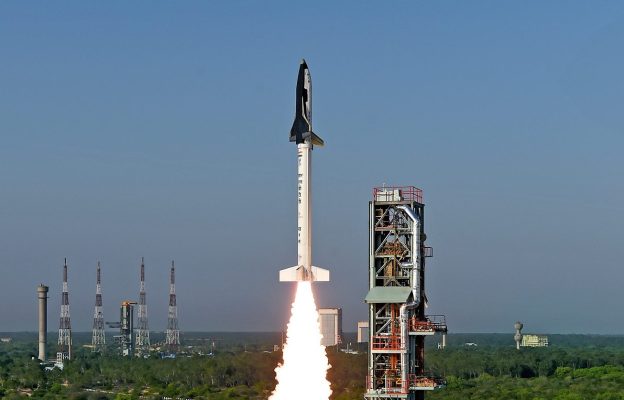India has successfully completed their first small step toward joining the other players in the market of reusable spacecraft.
On Monday, the Indian Space Research Organization (India’s version of NASA) launched a 22-foot winged spacecraft to an altitude of 65 kilometers (about 40 miles) and navigated the vehicle back down into the Bay of Bengal, east of India.
The entire mission lasted less than 13 minutes and didn’t travel high enough to reach space, but it was an important step for the Indian space agency on the path to making launches more affordable.
[gallery size="tc-article-featured-image-wide" ids="1327438,1327439,1327440,1327441,1327442,1327443"]
Their experimental vehicle, known as the Reusable Launch Vehicle-Technology Demonstrator (RLV-TD) reached Mach 5, survived high re-entry temperatures, and was used to test critical technologies such as autonomous navigation, guidance and control, and a reusable thermal protection system.
Approved for development in 2012, ISRO has invested the equivalent of $14 million into RLV-TD, according to the BBC. RLV-TD will undergo four experimental flights, the first of which was completed on Monday: hypersonic flight experiment (HEX) followed by the landing experiment (LEX), return flight experiment (REX) and scramjet propulsion experiment (SPEX).
ISRO is still many years away from a commercially available version of RLV-TD, but the fact that they’re joining the likes of Blue Origin, SpaceX, Virgin Galactic, and XCOR in an effort to develop a reusable vehicle is a sign that the entire industry is shifting away from traditional expendable designs.
While the RLV-TD may look like a mini-Space Shuttle because of its winged-body design, its size alone is an indicator that the RLV-TD program has a long way to go. At just 22 feet in length, the RLV-TD pales in comparison to NASA’s massive, human-rated 122-foot Space Shuttle Orbiter which brought astronauts into Low Earth Orbit for 30 years.
Regardless, this week’s successful mission marks an exciting milestone for India, one of the few countries that allocates significant resources to space exploration activities.
Compared to the annual budgets of other leading space-faring nations (NASA’s $18.5 billion, Europe’s $6 billion, and Russia’s $5 billion) India’s annual budget of $1.2 billion may not seem like a lot, but ISRO has been an important player in the launch industry for years.
India’s workhorse launch vehicle, the Polar Satellite Launch Vehicle (PSLV) has been used to bring small satellites into orbit for over two decades. In fact, since its first successful launch in 1994, PSLV has launched satellites from 20 different countries, including the U.S.
It may be a while before India has a commercially available reusable vehicle, but with the RLV-TD program underway, it seems the country is dedicated to bringing launch costs down and maintaining a competitive edge in the small satellite launch industry.
